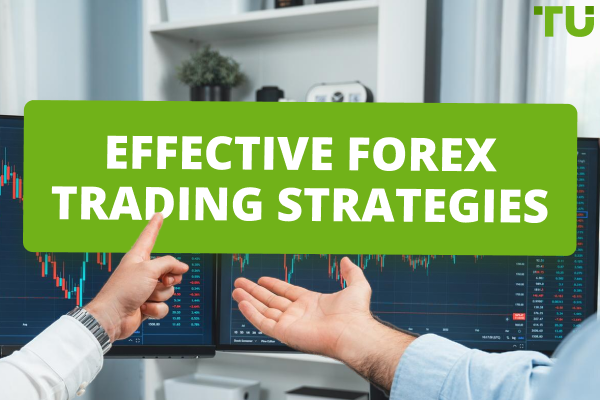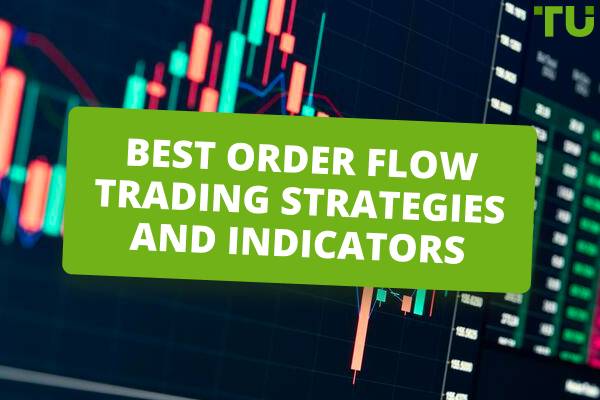Buying the Dip Strategy Review
It is fundamental to make a profit by buying something and selling it later at a higher price. The "buy the dip" strategy—though slightly more complex—works with this same principle. It is basically buying an asset when its price drops and selling when it starts to rise.
Buying the dip strategy is an age-old investment skill that many traders and investors utilize— including iconic investor Warren Buffet. Although it is mostly used in stock trading, "buying the dip" can also be employed in trading crypto, commodities, indices, and other financial assets.
Buffet believes that the "buy the dip" technique is excellent for long-term trading in the U.S. stock market because it always recovers. However, like every other technique, buying the dip has risks that you should know. Also, you cannot be entirely sure if or when the asset's price will increase or decrease.
Nevertheless, there are some important steps to take if you want to include them in your trading or investment plan. This article will help you understand how buying the dip strategy works, how you can use it, and how to manage its risks.
Start investing in stocks right now with Interactive BrokersWhat Does Buying the Dip Mean?
"Buy the dip" is a well-known phrase used by investors and traders during trading. When a financial asset has dropped in price, it is usually a good time to buy or add more positions. After buying dips, the trader or investor speculates that the price will bounce back.
The buy the dip strategy obeys the principle of "buy low, sell high," as investors buy assets when they become significantly cheaper and expect a future increase.
The key concepts of buying the dip are a quick decrease in the assets price and a solid signal that the price will recover. These concepts rely on the theory of price waves—that is, the predicted fluctuations of an asset's price. Generally, buying the dip is done in response to short-term price actions but can be employed in long-term investing.
"Buying the dip" strategy involves a form of market timing. You expect the market price to increase within a time period. This timing can be short- or long-term, depending on the asset and market factors.
The size of the dip can affect returns. The larger the dip, the more you are likely to gain.
But this may be risky, as fundamental factors can cause the price of stocks to remain low.
How Does the Buy-the-Dip Strategy Work on Stock
The buy-the-dip strategy is mostly used in stock trading. To successfully benefit from buying the dip, there should be an established risk control. It is imperative to set a fixed price to gauge risk, similar to a stop loss.
Assets that are in uptrends are considered to be perfect for buying dips compared to downtrends. When the price moves in higher lows and higher highs within a given period, it is an uptrend. However, when the price is moving in lower lows, it is a downtrend, and the asset keeps losing its value.
Most day and short-term investors consider downtrends to indicate exit a trade as it can incur losses. The downside of buying dips in downtrends is that prices may not rise again.
For instance, In the 2008 financial crisis, financial and mortgage companies experienced a downtrend that led to a continuous decline in the value of stocks. Prices of the companies' shares decreased so low and didn't appreciate even with time.
Downtrends may only favour long-term investors, as they can purchase more shares while counting on a future rise in price.
For instance, there was a significant increase in Apple's shares (AAPL) between 2009 and 2020. The price of shares increased from $3 to more than $110. Investors who bought some of those shares would have profited from the trade.
Another example is the dot-com bubble that crashed in 2000. The burst caused major losses in U. S. technology-based companies. However, NASDAQ still regained its peak 15 years later. Far-sighted investors who held on to the shares then retained their profits when the stock values were restabilized.
Furthermore, considering the 2020-2023 pandemic, which caused a major shut down of economic activities around March 2020. The stock markets, especially the Dow, experienced huge losses as the pandemic induced a standstill worldwide. This led to the stock market crash, which was seen as one of the worst in U.S. history. However, in April 2020, there was a major recovery of the stock market, even amidst the pandemic.
In 2023, the omicron wave caused stocks to plummet down hundreds of points. Still, the market restabilized and regained all it lost later in the year.
How Does the Buy-the-Dip Strategy Work on Crypto
Buying the dip is a common strategy used by crypto traders and investors in trading coins, especially Bitcoin. This is because cryptocurrencies are most likely to be unusually strong and volatile.
Although the volatility of the crypto market can make it difficult to enter the market at a given time, nevertheless, traders enter the market, they can take advantage of this volatility by buying dips to maximize profits.
Corrective dips or corrections can be beneficial in crypto trading. They are small dips caused by price fluctuations that indicate a deviation from the established trend. Corrections can be followed by recoveries depending on the coin.
In the image above, a support trend line can be drawn for Bitcoin from January to January 2023. There were many cases where the price of Bitcoin’s dropped to the trend line, signaling that it's time to buy.
In crypto, two strategies and market timing are used in buying the dip. Draw support trend lines on the chart, then use an oscillator like MACD or RSI to identify turning points. These will help you detect the current market price and target new highs.
Another strategy is to wait for oversold indicators on the chart. The signals from the indicator tell the trader to buy while targeting new highs. A challenge with indicators is that they can not indicate when a market will crash. So, they work best in uptrend conditions.
Dip buying can be beneficial in the long term if the trader or investor knows how to time the market and implement indicators strategically. For instance, since the onset of Bitcoin, there have been strong drawdowns in price, but in the long run, the value of Bitcoin has progressively increased.
How to Determine the Bottom
A bottom refers to the lowest price that an asset is traded for within a given timeframe. The price and volume of an asset are factors that can affect its bottom. Identifying bottoms is a huge advantage to maximizing profits and minimizing loss. Although no one can exactly tell when stock bottoms, some signs can help determine the moments of a bottom.
Patterns
Trendlines, patterns, and shapes on the price chart can give indications of a market bottom. They are the key support levels that show when prices often reverse. By observing them, you can identify when price bottoms.
Examples of these shapes and patterns include the V-shaped recovery, double bottom, ugly double bottom, pin bar, head-and-shoulders bottom, complex bottom, and so on. The image below shows an example of a pattern showing a double bottom.
Technical Analysis
Indicators used in technical analysis are also suitable for producing useful signals that indicate a bottom. They can also help determine the price trend of an asset, so you can decide whether to go long or short. For instance, oscillators such as RSI, MACD, Bollinger Bands, and moving averages are good indicators.
Risks of Buying the Dip Strategy and Methods of Managing Them
-
When the price of an asset keeps declining over a long period, it may not increase or recover. This is one of the major risks in buying the dip, as it can cause a trader to remain stagnant in a position or lose in the trade. One way to manage this risk is to place a stop-loss order on each trade. This way, the order can exit a trade at a specific price or when you lose a certain amount of money.
-
When buying the dip, it is nearly impossible to know if the decline of an asset's price is only momentarily or if it will decrease further. Seasoned investors or traders who know the market may make wiser predictions than beginner traders. Nevertheless, speculations may be inaccurate. This is why the use of indicators can help in these strategies. They provide market signals that tell you the direction of the trend and help you make profitable decisions.
How to buy the Dip
Always be mindful of the longer trend. When the market price is at its high, there is a tendency that a dip will occur. Also, look out for uptrends. When the price moves in its higher highs and higher lows within a given time frame, then it is the best time to buy. Buying the dip strategy works best with long-term traders, as small price fluctuations do not move them.
Utilize market indicators to help you decide when to buy if a dip occurs. Technical indicators such as oscillators can detect oversold conditions, which signals you to buy more assets. However, they may not tell when the trend is a downtrend. So, it is important to know how to combine them with your strategy.
Identify and observe sectors hit hardest during the sell-off of assets. Take advantage of the sell-off. Some sectors may be affected by fundamental factors like news, crises, and events. They may experience a plummet in stocks. If the sector had a good price uptrend, you may buy the dips and expect a future increase.
A good way to carry out the buy the dip strategy is on large market index funds such as the S&P 500. You can also select predictable sectors that constitute major indices and implement the strategy.
Observe those sectors with big share downtrends and analyze the factors that influence these declines. Ensure to evaluate the nature of the ETFs and mutual funds tracking your chosen sector.
However, it is not advised to invest in individual stocks because of their high risk. Instead, investing in low-cost index funds is better and can diversify your investments portfolio.
Optimize dollar-cost averaging (DCA) Dollar-cost averaging differs from buying the dip. It allows you to make steady investments or contributions within a given period rather than waiting for a fall in prices. With an IRA or other investment account, you can continue buying significant shares during the downtrend.
Best Brokers
Interactive brokers - stock trading
Interactive Brokers is one of the best brokers for trading many securities, especially stocks. It is a highly regulated brokerage company that is considered to be excellent and comprehensive. Interactive Brokers was established in 1993 and have since then accepted clients from more than 200 countries all over the world. It can allow different trades to hold in more than 130 markets from one merged account.
Interactive Brokers is considered to be one of the best brokers, especially for professional and sophisticated traders. So it may not be suitable for beginners. Nevertheless, Interactive Brokers offer the lowest possible commissions and margin rates. This makes it an excellent option for stock trading.
Coinbase - crypto trading
Coinbase is a well-established cryptocurrency exchange in the United States. It is known as one of the biggest trading platforms in the world. With Coinbase, you can easily trade Bitcoin and other cryptocurrencies at an affordable price range. It also offers a nice range of options for businesses and institutions, such as crypto storage, transaction services, and so on.
Founded in 2012, Coinbase was a platform for Bitcoin exchange at first. But recently, it has expanded to become a brokerage trade portal and accommodate over ninety different types of altcoins. Coinbase offers a feature-rich platform called Coinbase Pro that supports professional traders. It is easy to use and has a beginner-friendly interface.
Summary
The buy the dip strategy refers to buying a financial asset when there is a decline in its price while counting on the price to rise in the future. It is a well-known strategy utilized by many traders and investors. In cryptocurrency trading, dip-buying can be profitable due to the volatility of the market.
Buying the dip strategy can be risky, as you may not know whether the prices will keep declining or recover. So it works better with uptrends than downtrends. Also, determining bottoms is almost impossible. However, patterns and indicators can help to give signals of bottoms.
However, there are instances where long-term stock investing can bring returns from major downtrends in the stock market. This is why market timing and the right technical indicators are helpful in buying dips.
FAQs
Is buying the dip a good strategy?
This depends on the proper implementation of market timing and investment tools like technical indicators. Past prices are not perfect predictors of future prices. So, this strategy is almost entirely speculative. Since the buy dip strategy is dependent on price, it can be a high-risk venture.
What does it mean to buy the dip?
Buying the dip refers to a strategy that involves buying an asset when its price has declined and selling if the price should recover. The concept is that the dip buyer makes a profit after selling the asset when the price increases.
When should you buy dip stock?
The decline of the asset's price may be a good time to buy. You can also check out for signs of bottoms. If the signs are correct, then you can maximize profits from selling. However, the price may continue to decline with time, so it would be best to order a stop loss to manage the risk of losing the trade.
Is buying the dip timing the market?
Yes. Market timing is a major prerequisite for buying the dip. Timing comes with an established knowledge of the market and the factors that drive it. Improper timing of the market can lead to drastic loss of funds. This is why it is important to understand the market before making decisions.
Glossary for novice traders
-
1
Bitcoin
Bitcoin is a decentralized digital cryptocurrency that was created in 2009 by an anonymous individual or group using the pseudonym Satoshi Nakamoto. It operates on a technology called blockchain, which is a distributed ledger that records all transactions across a network of computers.
-
2
Deviation
The deviation is a statistical measure of how much a set of data varies from the mean or average value. In forex trading, this measure is often calculated using standard deviation that helps traders in assessing the degree of variability or volatility in currency price movements.
-
3
Index
Index in trading is the measure of the performance of a group of stocks, which can include the assets and securities in it.
-
4
Crypto trading
Crypto trading involves the buying and selling of cryptocurrencies, such as Bitcoin, Ethereum, or other digital assets, with the aim of making a profit from price fluctuations.
-
5
Forex indicators
Forex indicators are tools used by traders to analyze market data, often based on technical and/or fundamental factors, to make informed trading decisions.
Team that worked on the article
Andrey Mastykin is an experienced author, editor, and content strategist who has been with Traders Union since 2020. As an editor, he is meticulous about fact-checking and ensuring the accuracy of all information published on the Traders Union platform. Andrey focuses on educating readers about the potential rewards and risks involved in trading financial markets.
He firmly believes that passive investing is a more suitable strategy for most individuals. Andrey's conservative approach and focus on risk management resonate with many readers, making him a trusted source of financial information.
Also, Andrey is a member of the National Union of Journalists of Ukraine (membership card No. 4574, international certificate UKR4492).
Dwight specializes in risk, corporate finance, alternatives, fintech, general business trends, and financial markets, and he has broad experience managing complex projects. Dwight is an author for the Traders Union website.
Dwight was a financial columnist for The Wall Street Journal and The New York Times during the Great Financial Crisis. He has served as Editor-in-Chief of Worth, a personal finance magazine for the wealthy, and as Editor of Risk, the premiere global publication about derivatives, risk management, and quantitative finance, based in London.
He has also served as Managing Editor at The Economist Group and ran the Americas operations of two British trade publications.
For the last 12 years, Dwight has worked as a freelance writer and editorial project manager, serving clients in the financial technology, banking, broker/dealer, consulting, asset management, and corporate sectors. This has given him considerable experience in idea generation and project management, working collaboratively to help clients meet their goals with little or no supervision.
Mirjan Hipolito is a journalist and news editor at Traders Union. She is an expert crypto writer with five years of experience in the financial markets. Her specialties are daily market news, price predictions, and Initial Coin Offerings (ICO).













